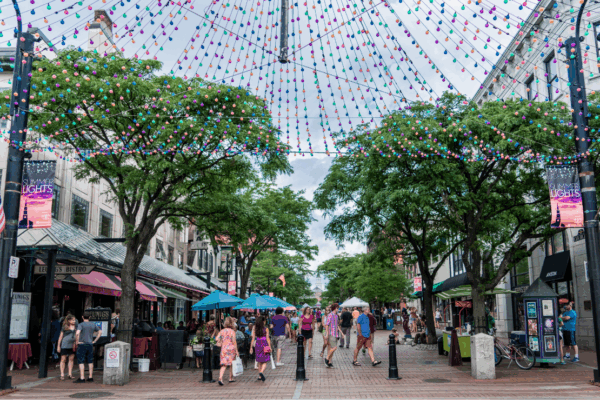Vermont communities are resilient and powerful. The federal government’s attacks on our shared values and constitutional rights have been met with creative opposition and daily acts of resistance—there are ample grounds for hope, even amidst the chaos and abuses of power in Washington.
And yet, even here in Vermont, we still see a stark contrast between our shared values and the actions of our own state government when it comes to community safety.
Governor Scott recently announced that he plans to address community safety concerns in Burlington. In theory, this could be a good thing. If the governor proposes bold new funding initiatives that will provide emergency shelter, invest in mental health services, increase access to drug treatment options—any of those actions could make a huge difference for people in Burlington and statewide.
Unfortunately, none of that is likely to happen, considering that Governor Scott has consistently opposed those very investments. Indeed, no one is more directly responsible for the precarious situation in cities and towns across the state than the governor himself.
In recent months, Governor Scott has led the charge to defund Vermont’s emergency shelter system, resulting in the mass unsheltering of hundreds of individuals—families, children, and people with disabilities included.
Likewise, as people and communities across the state face growing challenges, the Scott administration has failed to fund desperately needed mental health services and stood by while existing services have been cut. Amid an opioid epidemic, the governor has opposed harm reduction strategies proven to save lives and improve community safety. Scott has effectively opted to spend our taxes on prison beds instead, though they are far more costly in both lives and dollars.
Because all the evidence shows the safest communities don’t have more police and prisons—they have more resources.
We Vermonters are still living through the lingering impacts of a global pandemic, a widening wealth gap, a persistent affordable housing shortage, and widespread economic instability. That’s on top of decades of austerity budgeting in which we have defunded our social safety net—underfunding schools, shrinking the state’s emergency housing program, cutting public transit services, and more. It seems the only constants in our economy have been widening inequality, steady inflation, and painful cost-of-living increases for working people.
On top of that, Vermont policymakers have compounded a self-inflicted housing crisis by unsheltering hundreds of our most vulnerable neighbors, while many thousands more struggle to make ends meet.
The impacts are visible all around us, in communities from St. Albans to Burlington to Montpelier to Rutland to Brattleboro. People are struggling. We all know this, and most of us Vermonters know the people who are in harm’s way are not to blame for the challenges we face.
Unfortunately, some state legislators have warmed to the governor’s failed “tough on crime” approach, and Vermont is increasingly responding to community safety concerns with handcuffs instead of help.
After years of progress to reverse the damage of mass incarceration and build towards a smarter, evidence-based justice system, Vermont’s prison population is now the highest it has been in five years. We have heard that legislators will be considering proposals which go even further, including authorizing involuntary confinement for people in crisis.
While no one doubts the need for responsible action, warehousing people in cages is not the answer. Decades of research and data show that does not improve community safety, with some studies showing incarceration increases the risk that someone will commit a crime in the future.
Putting more people in prison is not only the least effective option, it’s also the most expensive. In Vermont, it costs the state an average of $95,000 per year to incarcerate one person. For a fraction of that price, we could be making real investments in lasting solutions to the challenges we face.
The ACLU and community partners have been saying this for years, urging policymakers to invest in people, not prisons. In poll after poll, an overwhelming majority of Vermont voters have asked for the same. We have shared in historic successes reforming Vermont’s punitive legal system, and yet far more still remains to be done.
It is a sad irony that, just as the Trump administration seeks to reverse a century of progress on racial justice, Vermont leaders who say they oppose those efforts have themselves started to turn back the clock on our own progress, just as the president himself would have it—and with significant implications for civil rights in Vermont, still home to some of the worst racial disparities in the country.
Burlington leaders and residents should continue to demand the governor and legislators stop denying communities the resources they need and invest in solutions that address root causes of community instability: housing, mental health services, and harm reduction. Vermonters want their elected leaders to take bold action to oppose federal abuse of power, not pursue a course more aligned with the President than with their own constituents.
Because all the evidence shows the safest communities don’t have more police and prisons—they have more resources.
A version of this commentary was published in the Manchester Journal and other outlets.

